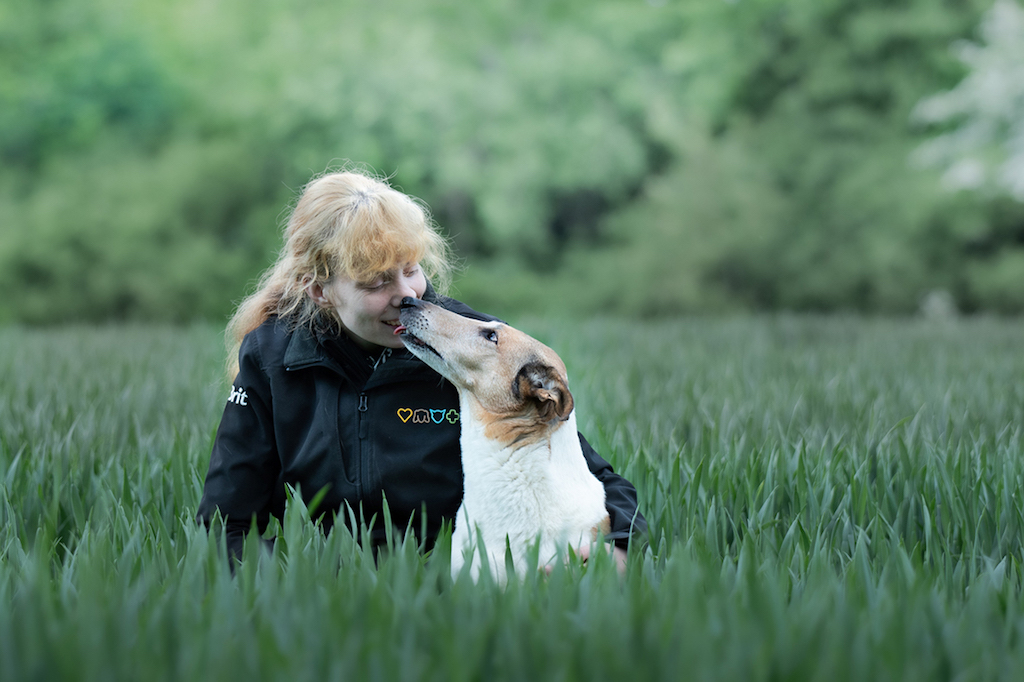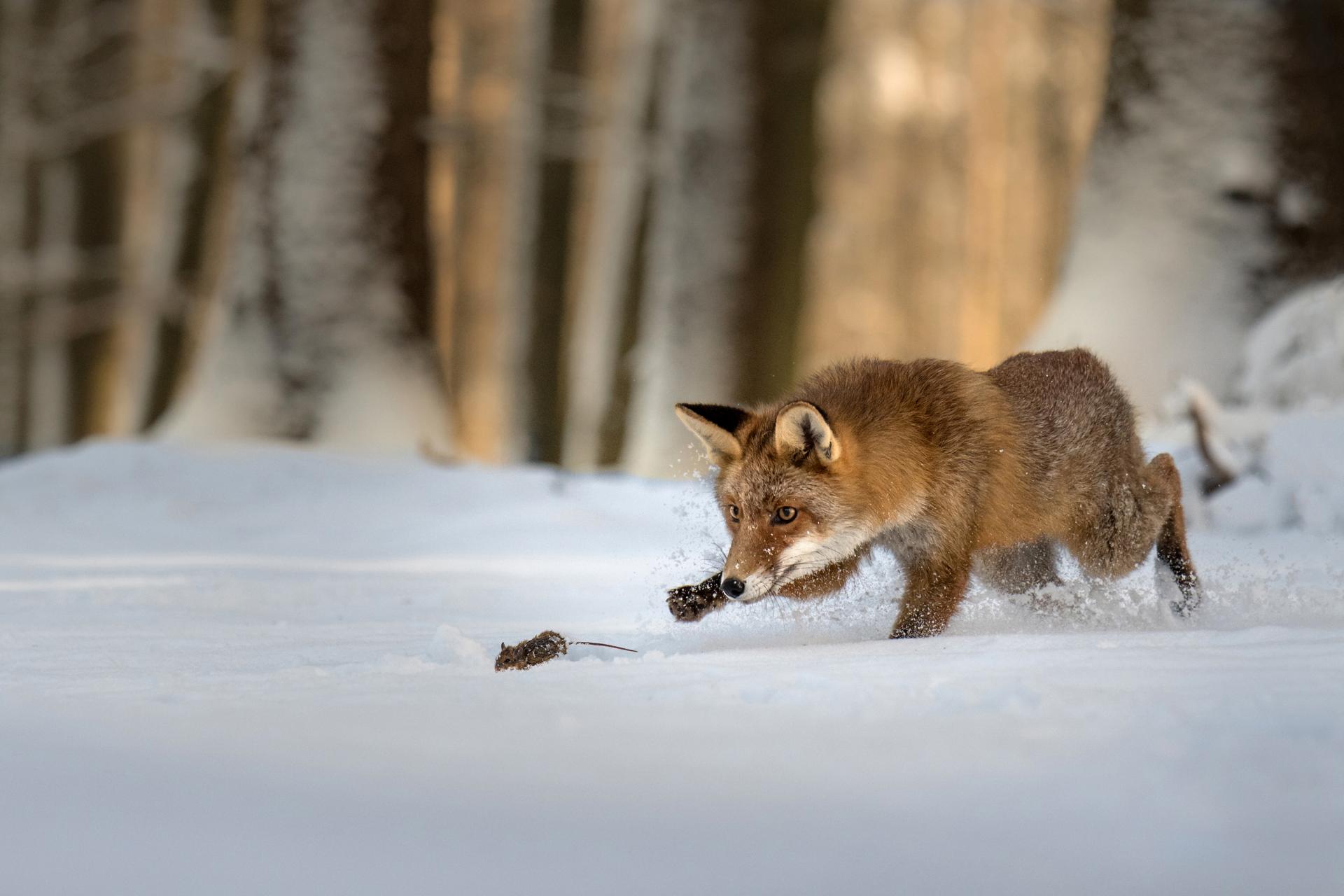Interview With Lucia Drietomská From Slovakia

The 2022 London Photography Awards Demonstrates Professional Photographers of Different Categories
July 5, 2022
My Time at Sandrock Early Access Review
July 6, 2022Interview With The 2022 London Photography Awards Platinum Winner – Lucia Drietomská
1Can you introduce yourself and talk about how you got into photography?
My name is Lucy and I am a photographer from Slovakia. I have been involved in art since I was a child, thanks to the artistic family I come from. It started with dogs in the settlement, cats in the garden, animals in the zoo and reached lions, tigers, wolves and other animals in private farms. Animal photography fascinated me since childhood, but for a long time I was just an observer in seclusion. As a child, I took a few photos of my dog with a film camera called Practica, but it wasn't until high school that I decided to deepen my interest and put it into practice. So in 2005 I started with a dog photo. At that time, there were not as many good and high-quality photographers as there are now, so I thought that learning on my neighbours’ dogs would be a great motivation. To my surprise, the photos were a success and several people started paying me for the photos so that I could get a better technique, as I took photos with a compact.
2Where did you study photography?
It wasn't quite a study of photo. I studied fine arts at a high art school in Košice (Eastern Slovakia), where there was also a department of photography. That was my first contact with real photography.
3Do you remember your first shot? What was it?
This is really hard question, because I started making photos 16 years ago. But I think it was photo of my first dog, dachshund Sandy. She was my biggest muse, inspiration and great model.
4What equipment do you use?
I started 16 years ago with a Nikon D3000, that I got from my parents for school. Then I switched to the D7100, and after eight years of finding out that I wanted to take photos of dog sports and wildlife, I switched to the Nikon D500. All the time, I used objectives from Nikon and Tamron. Two years ago, I got a Nikon D850 and started with Sigma Art objectives, and this year I change all my equipment for a Sony Alpha A1 camera with Sony 135mm GM and Sigma ART 35mm DG DN objectives.
5What do you hope to achieve?
I don't want people to admire me. I want them to like my photos and make them happy. I would like to capture the relationship between a dog and another animal. In wildlife photos, I want to take pictures of wild wolves. I want people to look at my photos after years and warm them at the heart of the memory of their lovely pets, even if they are no longer with them.
6What compliment inspired/touched you the most?
I am really not sure, but I think, it was a compliment from my college professor. He said he admired my talent as he would like. He said that if he had my talent and I had his equipment, it would be perfect. But every compliment I receive will delight me and give me the feeling that, despite the crowded market, my photos still make sense.
7What inspires your unique storytelling?
It's always been my smooth collie Tara and dachshund Sandy. My two girls have always been here for me and I wanted to show the world by photos, how awesome they are. Even now that I don't have them anymore, I work with their unpublished photos so that no one will forget them and keep them in heart like me. From the beginning, they supported me in photography, helped me with the purchase of photo equipment (yes, it wasn´t easy each time), and when my father saw that I was interested in photography, he also showed me how to take pictures on an old camera. Besides, they are my parents. I really wish they were proud of me.
8What THREE (3) words describe your photography style?
Atmosphere, love for photography and animals.
9Congratulations! As the winner of the London Photography Awards, what does it mean for you and your team to receive this distinction?
It's a huge honour for me. It's a reward for years of work and finding out that I also have a place in a world full of amazing photographers. It is often said that people's achievements do not shift them, but criticism does. For me, it's probably the opposite. Thanks to every little success, even the spark will ignite in me again and I will get a new desire to create.
10Can you explain a bit about the winning work you entered into the 2022 London Photography Awards, and why you chose to enter this project?
The first winning photo is my collie Tara with a sheep. It's a photo I've always wanted to take. Since Tara was a bit strange like a shepherd dog and afraid of sheep, it was a big challenge for me. This photo was taken unexpectedly when I took a picture of her friend's dogs on a small lavender field in eastern Slovakia. The lady told me, that they had two new sheep. It immediately occurred to me that taking a picture of Tara with a lavender sheep would be a wonderful photo. Tara looks very pretty in the lavender field, and she is perfect with purple, so I left a collar in the photo, which underlines the consistency of the whole photo. This is my dream photo, which we prepared for almost 40 minutes, and this photo came out of about 5 seconds of photography.
My second photo of a fox that catches a mouse was created in a private photo shoot, or rather a workshop, in which I regularly participate in the Czech Republic. As I wrote, it's a man-raised fox, but it's not a pet. I have always wanted to create a dynamic photo that captures the cycle of life in its purest form. When I had this opportunity, I immediately seized it and for me a wonderful photo was created.
My third photo comes from the covid period. This was my first test of a Sony A1 camera, which was borrowed to me directly by Sony. I went to the pond through the cold autumn morning until there weren't many people there yet. There was nothing happening for a long time, and when I wanted to leave after 2 hours, the ducks suddenly came to life and started flying on the water surface, which they sprayed all around. I really wanted to capture some moments when the ducks land on water. I took about 2,000 photos and only one of these came out, where a duck dug up water at the moment of its landing on the surface. I was very impressed by the dynamics of the photo, but the colour was not interesting. That's why I put the photo in black and white to make the movement and dynamism of the motif stand out.
11How has winning an award developed your career?
It was a big surprise for me, but a writer from Germany, who is writing a new book about dogs wrote to me. She saw my winning photo of a collie and a sheep on your site. She really wanted to have this picture in her book, so I gave it to her and not only that. She offered me the opportunity to publish my photos in her book, which is my dream come true.
12Name 1-3 photographers who have inspired you.
My first and greatest inspiration was Jim and Jamie Dutcher, who with the help of the "Sawtooth Wolves" project, wanted to bring wolves back into the wild and created a huge number of breath-taking photos of wolves in their special, man-made enclosure. That started my interest in photography. When I started taking photos, my other model for wildlife photo was the Czechs Petr Slavík and Rostislav Stach. Most recently, I have another role model in photographer Vincent Munier, who, like Jim Brandenburg takes breath-taking wolf photographs in the Arctic wastelands. And so that we don't just have wolves, my role models photographing the amazing African fauna (mostly felines) are Jonathan and Angela Scott. In addition to them, it is Burrard Lucas, who surprises the world with his breath-taking photos, literally from under the papule of lions, hyenas or African dogs.
13What was the best piece of advice you were given starting out, by a mentor or your role model?
At first it was my dad who told this to me (after a few years, my professor told me the same thing): “Don't worry about that what others thinks about you. Do you enjoy taking pictures? So take a picture! Never take a picture for others, but only for yourself.“
14What advice would you give someone who would like to become a photographer today?
Probably the main advice is not to be discouraged. Today we have a lot of photographers, many are really good, but many just bought a camera during Covid and immediately set up websites and take money for photos ... Nowadays, it's not easy to be a photographer, but if you enjoy it with joy, be sure not to give up that dream and take a lot of pictures. Practice makes perfect, so I recommend taking pictures and taking pictures. Visiting some photo courses certainly won't hurt a course. For example, I was not on any photo course until I knew how to take pictures. I have learned everything myself and I must say that the gradual discovery without books and instructions has had a great charm, and I now know that every success I have achieved has been deservedly earned as a reward for years of learning and improvement. So even if we have a lot of photographers, always go with your eyes open and a camera ready. You never know which scene will turn out to be perfect for you.
15What is your key to success? Any parting words of wisdom?
I don't have any special key. I just take photos and sometimes I put photos that I love for some of those competitions and I hope that they will address others as they address me.
16How do you stay in that space of being receptive to new information and knowledge?
I'm not trying to stay here. In short, I will continue to take photos as before. I will try to come up with a new, interesting idea. I don't need to stick to the latest trends, we have enough photographers here for new trends. Whoever likes my job, will find me. And I will try to improve even more in what I love.
17Anything else you would like to add to the interview?
I would just like to thank you for a beautiful competition and wish you that this competition will remain in the world for a long time to come. Because it also helps to develop photography and inspire new young photographers.
Winning Entry
Circle of life | 2022
For me this photo is the circle of life in its purest form. I think the covid situation in 2020 was really great for world…
(Read more at London Photography Awards)
Lucia Drietomská
Lucia Drietomská is an animal photographer who strives to protect the memories between nature and humans.
Read about this article with Christa Funk from United States, Platinum winner of the 2022 London Photography Awards.


